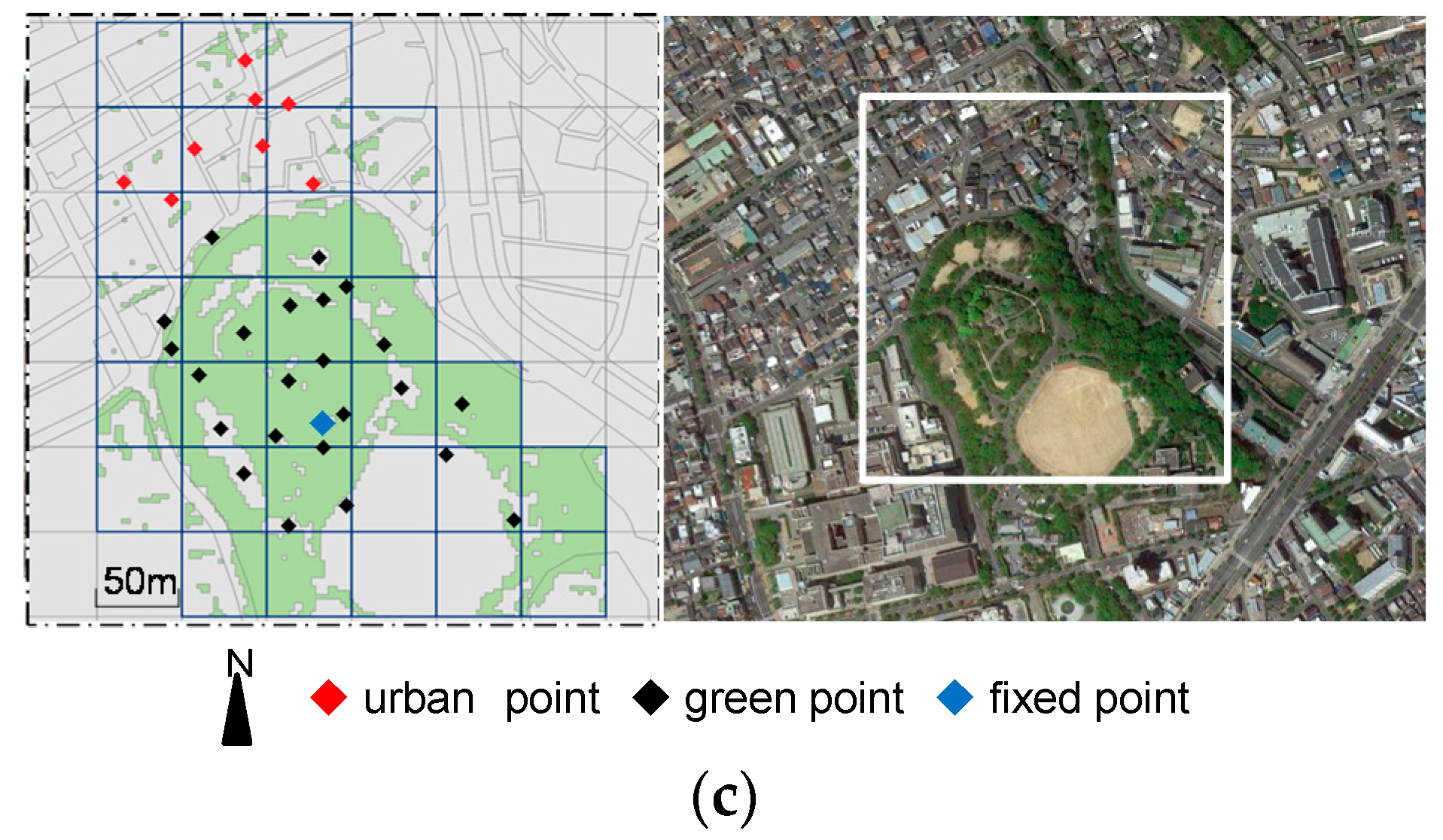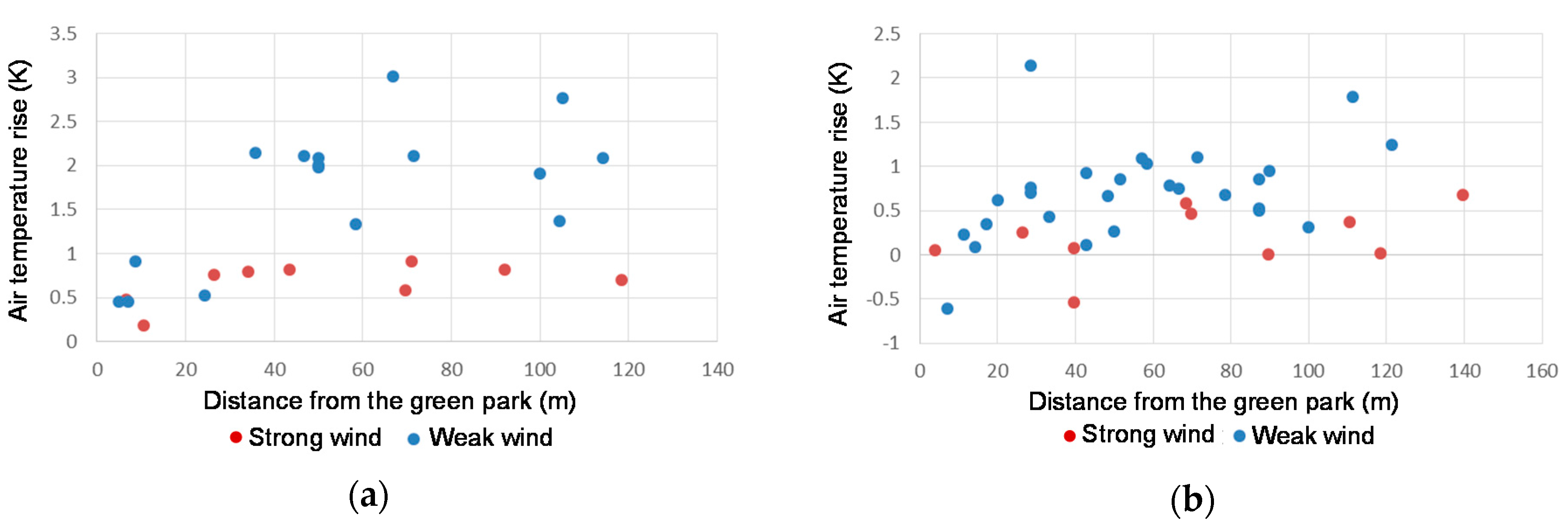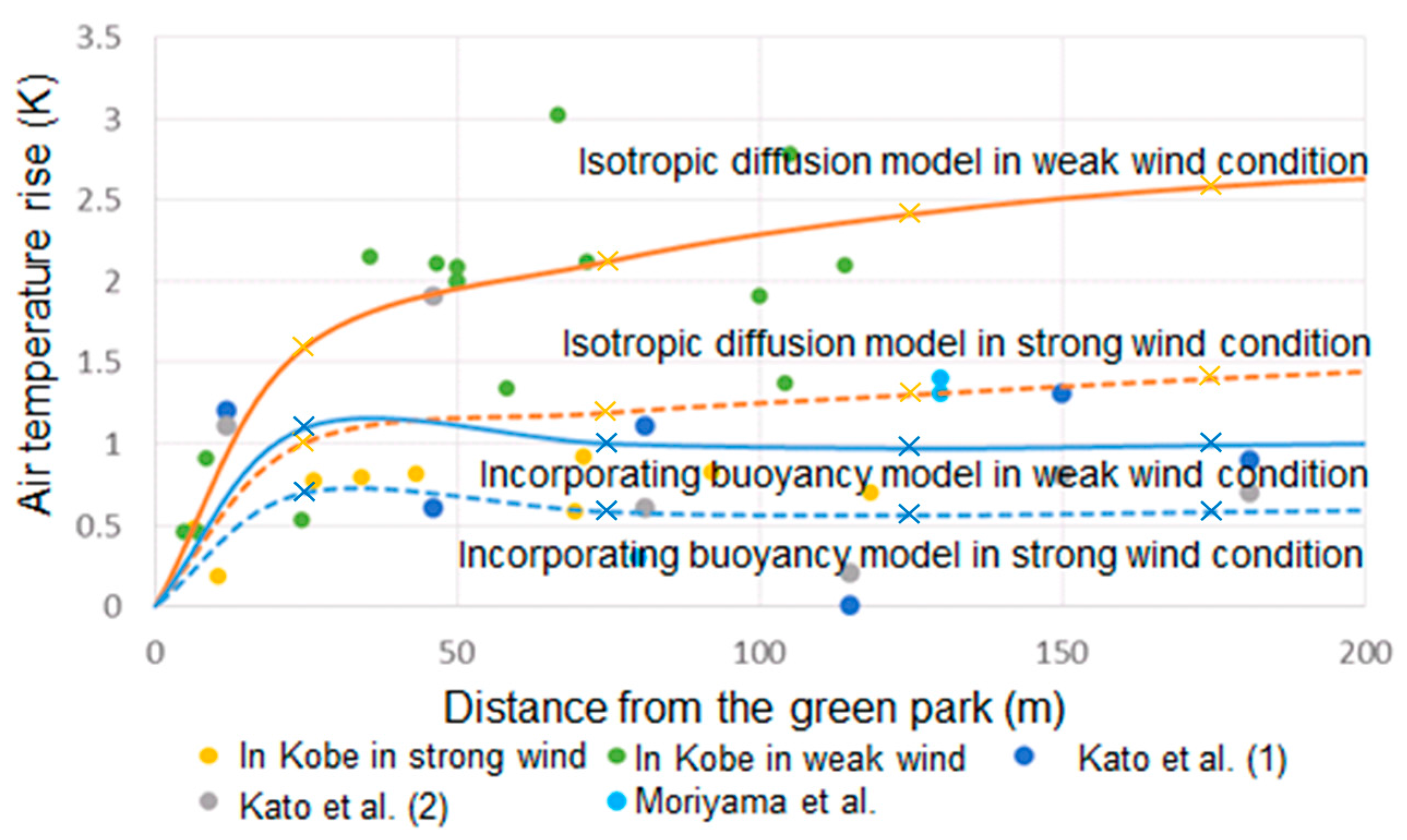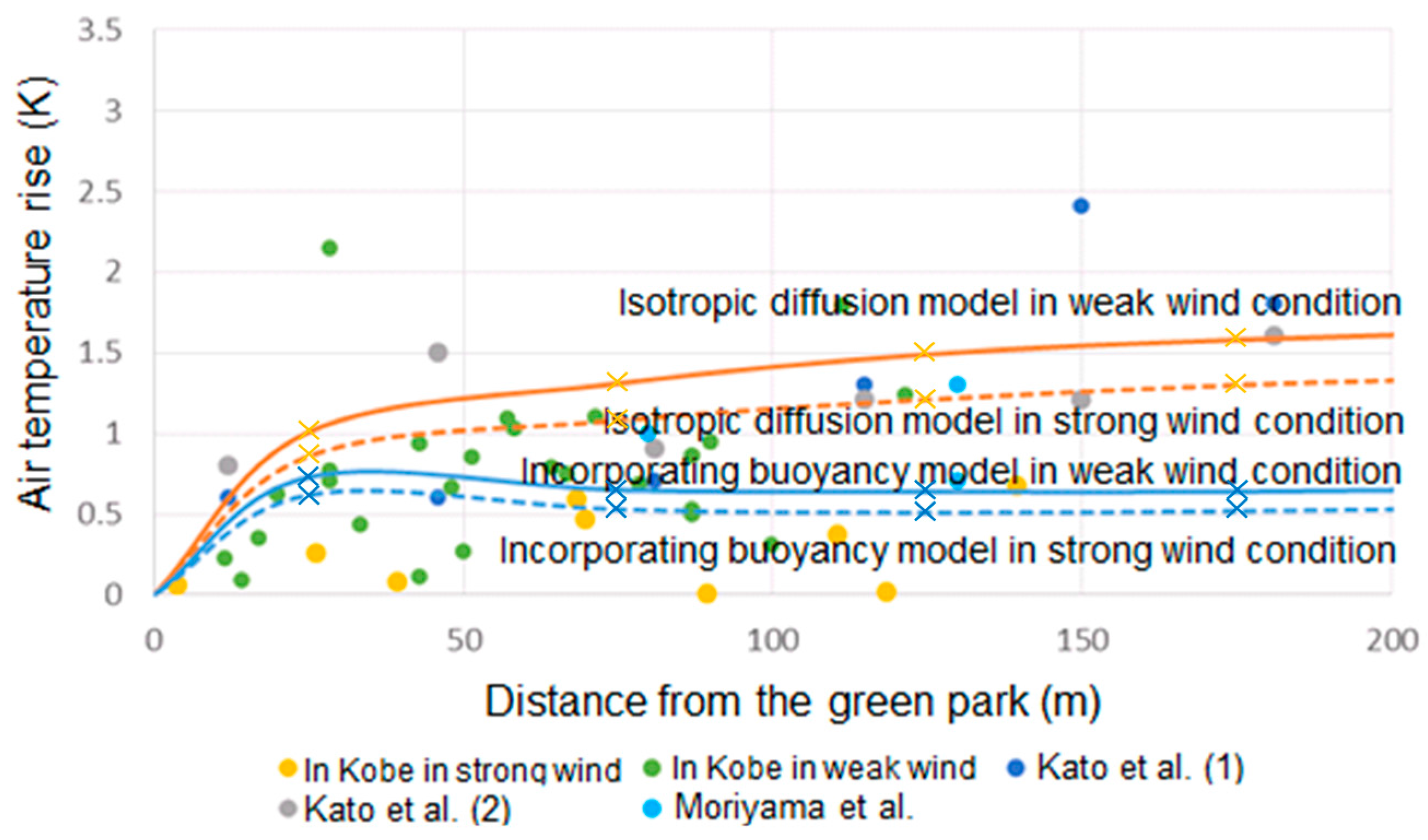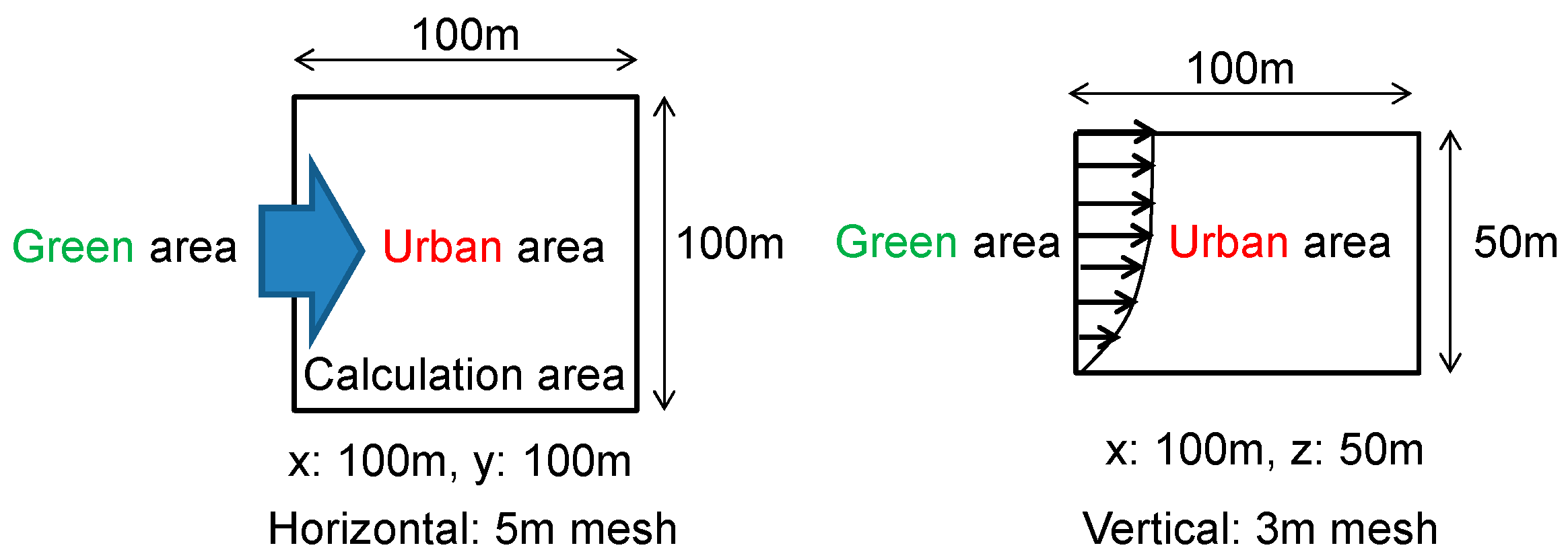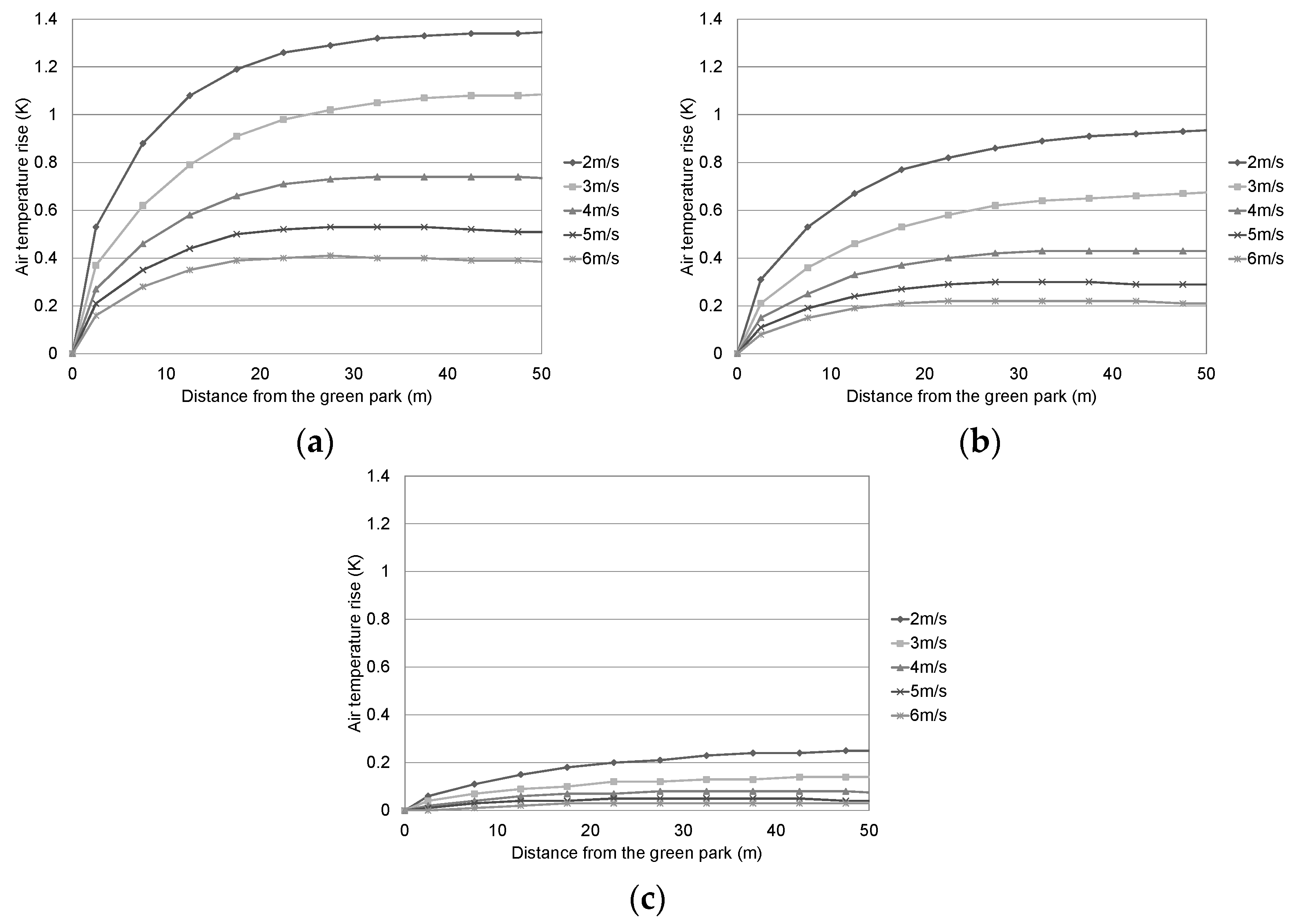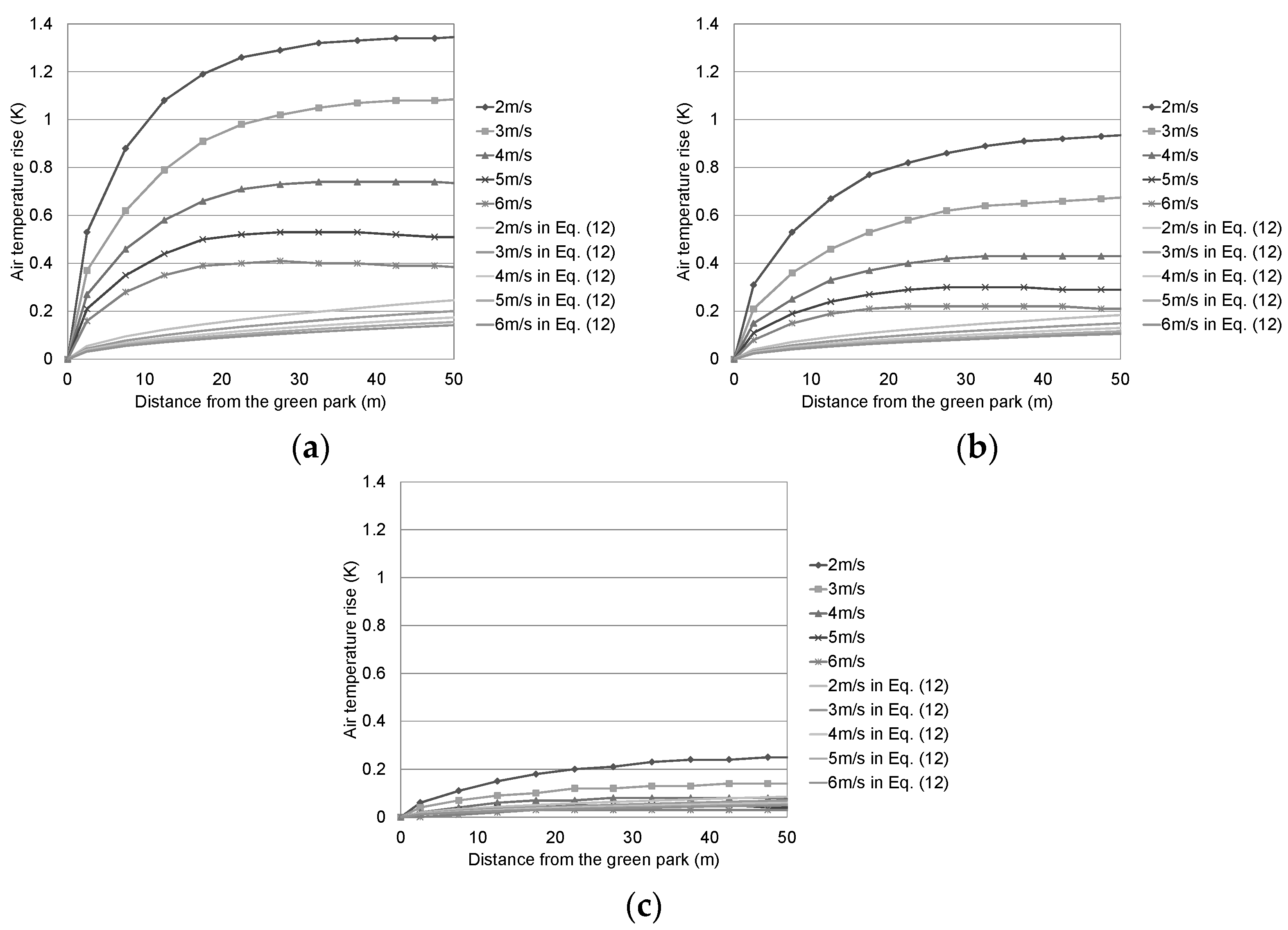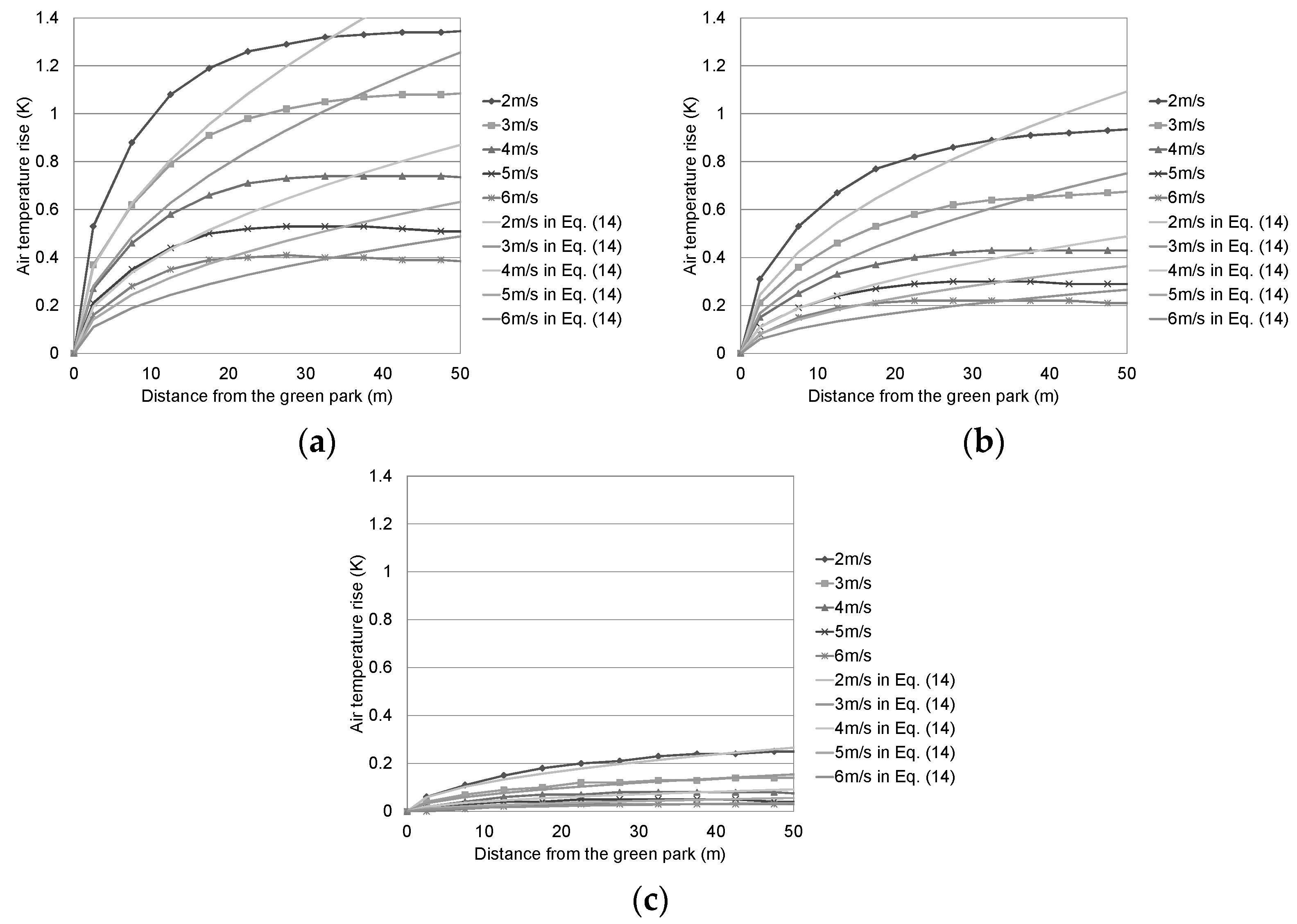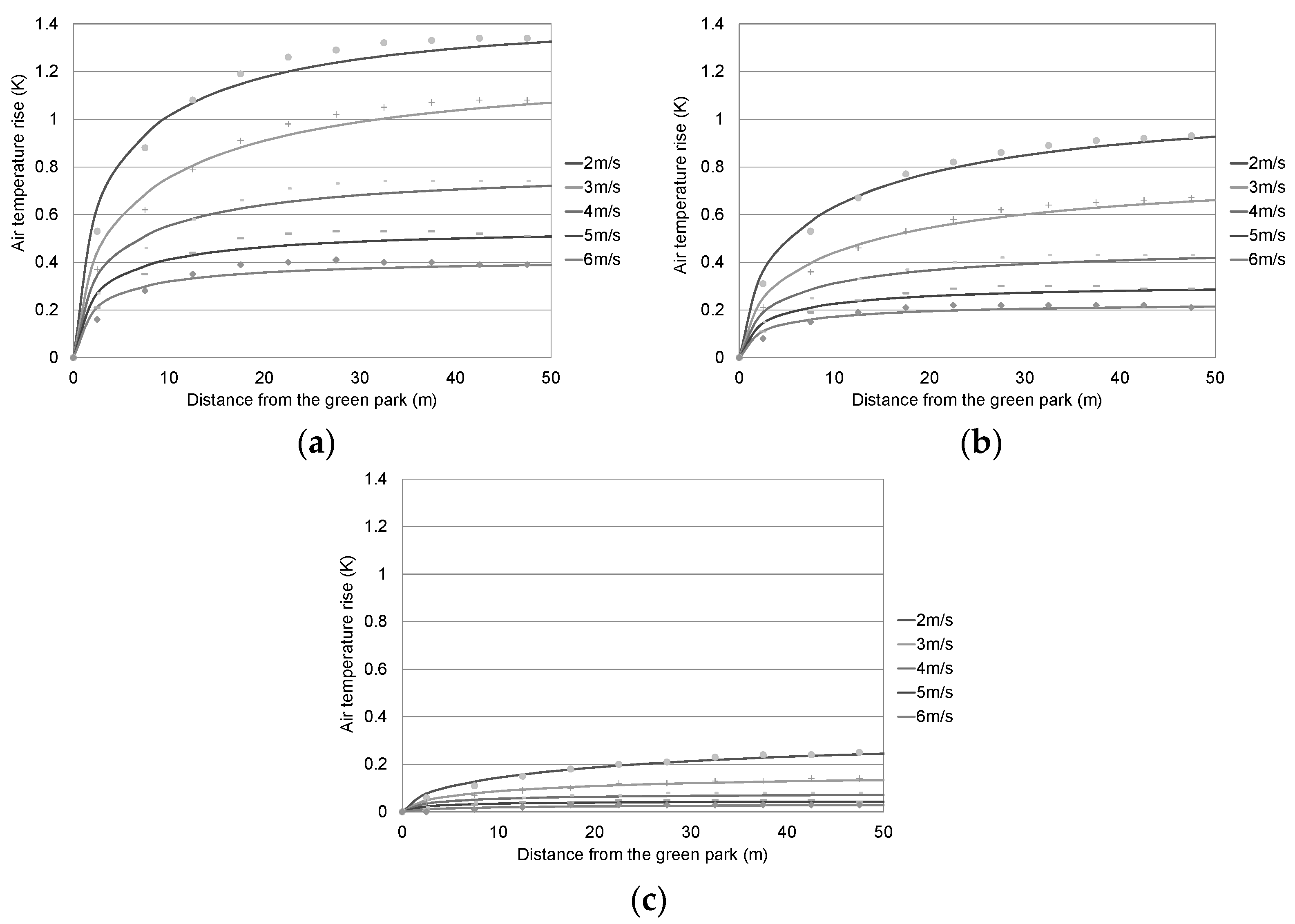1. Introduction
Urban greenery is one of the main measures for mitigating the thermal environment in urban spaces. Givoni [
1] has organized the functions and impacts of urban planted areas through a review of research papers and has presented climatic guidelines for hot-dry regions, hot-humid regions and cold regions. A summary of climatic guidelines for park design is as follows: it is to provide ample shade and to protect from dust for hot-dry regions; it is to provide shade, to minimize wind blockage, to improve the ventilation and to minimize floods for hot-humid regions; it is to provide wind protection without blocking the winter sun for cold regions. He summarized that the influence of city parks and open spaces on the urban climate is limited to the conditions prevailing within these areas themselves, and extends only a short distance into the surrounding, densely built, urban area. On the other hand, Honjo and Takakura [
2] explained that the range of the effects of urban green areas extends to about 100 to 300 m into the surrounding urban area. They also explained that 300 m along the main wind direction is the ideal length for an urban green area, based on two-dimensional analysis results.
In recent years, interest in this field of study has increased. How to quantify the range of the air temperature reduction effect of an urban green area on the surrounding urban area is a question that has been frequently asked by administrative officials responsible for organizing urban green spaces. Moriyama et al. [
3] have conducted numerical simulations to examine increases and decreases in air temperature in urban areas adjacent to green areas. They used the following conditions: an inflow upper wind velocity of 2 to 6 m/s at 50 m above the ground, a ground surface temperature difference of 1 to 5 °C between green and urban areas, and a roughness parameter of 0.1 to 1.0 m for green areas and 0.5 to 1.0 m for urban areas. The evaluation height was 3.25 m above the ground. They concluded that the influence of the green space extends to a distance of about 150 m from the urban-green boundary. The above-mentioned Honjo et al. [
2] have carried out numerical simulations under the condition that an inflow upper wind velocity is 4 m/s at 200 m above the ground, a ground surface temperature difference is 4 °C between green and urban areas, and a roughness parameter is 0.2 m for both the green area and the urban area. The evaluation height in this case was 2 m above the ground. They concluded that even a green area with 100 m size affects the area within a distance of about 300 m from the urban-green boundary.
There are a few studies focusing on air temperature reduction in urban areas around a green area [
4]. Ca et al. [
5] have carried out field measurements to determine the cooling influence of a park on the surrounding area in the Tama New Town, a city in the west of Tokyo. With the size of 0.6 km
2, a park can reduce the air temperature by up to 1.5 °C at noon time in a leeward commercial area at distance of 1 km. Yu and Hien [
6] have carried out temperature and humidity measurements in two big city green areas (36 ha and 12 ha) in Singapore. A three-dimensional non-hydrostatic model (Envi-met) was applied for the simulation of Surface-Plant-Air interactions inside urban environments. Horizontal air temperature profiles in both the green area and surrounding area are calculated by the Envi-met model.
Yagi and Takebayashi [
7] have performed measurements at four urban areas in Kobe City. The spatial variation of the vertical air temperature gradient between 4.0 m and 1.5 m is large in urban areas, since air temperature reduction effect in urban areas is different depending on the circumstances around the measurement point. Since sea breezes dominate in summer days in many cities in Japan, air temperature reduction due to advection effects is expected in regions leeward of urban green areas. In this study, the characteristics of air temperature in the urban area on the leeward side of green areas are considered using a numerical model incorporating advection and diffusion, and verified by comparison with measurement. The objective of this study is to clarify the characteristics of air temperature rise in an urban area on the leeward side of a green area, as a contribution to the practical planning of urban greening.
4. Discussion
In addition to the measurement results in Kobe City, the calculation results in
Figure 8 and
Figure 9 were also compared to the measurement results in the urban area around Koishikawa park in Tokyo by Kato et al. [
9], and several parks in Osaka city by Moriyama et al. [
10]. In the results measured in Tokyo and Osaka, air temperature does not rise as it enters the part of the urban area more than 50 m from the green area. On the other hand, Honjo and Takakura [
2] explained that the range of the effects of urban green areas extends to about 100 to 300 m into the surrounding urban area. Since they used the isotropic diffusion model, it is recognized that it was a finding only in the case of weak wind.
In order to discuss this in more detail, a recalculation was carried out, improving the spatial resolution in the urban area near the green area. An outline of the modified calculation conditions is shown in
Figure 10. The horizontal mesh size was changed to 5 m from 50 m as in the above calculation. The other calculation conditions were not changed.
Calculation results of air temperature rise according to the distance from the green area are shown in
Figure 11. Sensible heat flux from the ground surface in the urban area was assumed to be 236.7 W/m
2 for daytime and 28.3 W/m
2 for evening. A value of 132.5 W/m
2 was also assumed for their intermediate value. When entering the urban area air temperature rises sharply. The smaller the wind velocity, the larger the distance influenced by the green area, and the larger the air temperature rise. As the distance from the green area increases, air temperature becomes constant. When entering the part of the urban area more than 50 m from the green area, the air temperature near the ground surface is dominated by the diffusion effect in the vertical direction rather than the advection effect from the green area.
In general, air temperature rise ∆
T (K) due to the development of the urban boundary layer is expressed by Equation (12).
where
k is the ratio of entrainment (0 to 1),
H is the sensible heat flux from the ground surface (W/m
2),
L is the distance from the boundary (m), α is air temperature gradient (K/m),
Cp is the specific heat of air (=1000 J/(kgK)),
ρ is air density (=1.2 kg/m
3), and
U is wind velocity (m/s). Assuming α = 0.006 (K/m), it becomes Equation (13).
Air temperature rise ∆
T, by Equation (12), when
k = 0 is shown in
Figure 12 together with the calculation results. Equation (12) is calculated using the boundary layer thickness
h = ∆
T/
α. Actually, when the development of the boundary layer is not sufficient and
h is small,
α should be set to be large. Then, air temperature rise ∆
T approximated by Equation (14) is shown in
Figure 13. The coefficient
a at this time is shown in
Table 3. It is larger than the 0.0032 used in Equation (12).
As described above, the calculated air temperature near the ground surface rises sharply as it enters the urban area. This is because of the sensible heat flux from the ground surface, and when entering the area beyond about 50 m, it becomes almost constant. On the other hand, the approximate value of the air temperature due to the development of the boundary layer monotonically rises with the distance from the green area. Therefore, we considered an approximation based on the following equation where air temperature rise becomes constant as the distance goes above a certain value. Air temperature rise ∆
T by Equation (15) is shown in
Figure 14 together with the calculation results. When entering the urban area, air temperature rises sharply, and when entering the area beyond a certain distance it becomes almost constant.
5. Conclusions
In order to clarify the characteristics of air temperature rise in an urban area on the leeward side of a green area, mobile measurements and calculations expressing advection and diffusion effects are made. These calculations were then verified by comparison with the measurement results. The relationship between the distance from the green area to each mobile measurement point in the urban area and the air temperature rise is analyzed using the measurement results in Kobe city. At a measurement point where the distance from the green area is 30 m or more, the air temperature of the urban area becomes unaffected by the green area.
Calculation results and measurement results for air temperature rise with distance from the green area are compared when an isotropic diffusion model and an incorporated buoyancy model are applied for the vertical diffusion term. From the comparison with the measurement results in Kobe City, as well as in Tokyo and Osaka, it is considered that air temperature does not rise as it enters the part of the urban area beyond more than 50 m from the edge of the green area. The air temperature rise in the urban area near the green area, due to the development of the urban boundary layer, is expressed using the sensible heat flux from the ground surface, the distance from the green area and the wind velocity. We considered an approximation of air temperature rise in order to express the following situation: when entering the urban area, air temperature rises sharply, and when passing beyond a certain distance, it becomes almost constant.

